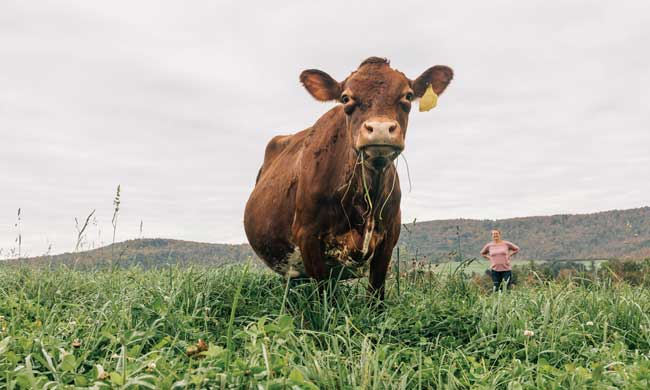HEALTHY LIVING
Dos and Don’ts for Naturally Beautiful Skin in Winter

As the temperature begins to fall so does the radiance and moisture of our skin. The freezing cold temperatures of winter leave our skin dull, dry, flaky and itchy. That means not only do you have to change your wardrobe when winter comes, you need to change your beauty routine too. To help you combat the wrath of winter, here are the top 10 dos and don’ts of winter skincare.
Dos
- Always moisturize
The dry winter air can be damaging to your skin, causing it to become dry and flaky. It’s important that you moisturize everyday, at least once a day, to combat the dryness. Your choice in moisturizer should also reflect the change in weather. Look for a moisturizer that is thick and cream based, like Pure Fiji’s body butter. This super moisturizing cream is made with a blend of coconut, macadamia, dilo and sikeci oils to rapidly hydrate your parched skin. - Keep those hands covered!
Make sure you are wearing gloves every time you go outside, especially when the air is cold and frosty. The skin on your hands is thinner than most parts of your body and the cold air can quickly dry out your hands. The easiest way to protect your hands is to wear gloves and always use a hand crème, both at night and during the day. Pure Fiji’s nourishing hand creme contains cold pressed coconut oil to keep your hands nourished, hydrated and soft. - Use a humidifier
Instead of cranking up the heat on a cold day, try using a humidifier instead. Central heating systems (as well as small room heaters) blast hot dry air, which can dry out your skin. Humidifiers help to add moisture to the air, which helps prevent your skin from drying out. If you can, use more than one humidifier throughout your house to disperse the moisture more evenly. - Exfoliate, exfoliate, exfoliate
Because your skin tends to be drier and flakier in winter, it’s important that you exfoliate to get rid of dead, dull skin. Exfoliating will also help your thirsty skin absorb more hydration from your moisturizer. Try to exfoliate at least a few times a week. A great choice in body exfoliator would be Pure Fiji’s coconut creme body scrub. This scrub contains natural cleansers derived from sugar cane and coconut, as well as pineapple enzymes that gently exfoliate and brighten your skin. - Try a DIY Mask
Often times the best ingredients for your skin can be found in your home – in your fridge or pantry. Pure Fii’s Nourishing Exotic Oil contains cold pressed virgin coconut oil, macadamia, dilo and sikeci oil which is amazing for your dry, winter skin as it’s chock full of beneficial vitamins and nutrients to nourish, moisturize and protect.Super Hydrating Coconut Moisture Mask
Ingredients:
- 1 tablespoon Nourishing Exotic Oil
- 1 tablespoon honey
- ½ of a mashed avocado or egg (well whisked)
Directions:
Blend all ingredients together well and apply to skin. Leave on for 15 minutes then wash off thoroughly with water.
Don’ts
- Soak in a hot bath or shower
Having a piping hot bath after being out in the cold might seem like a great idea but in reality it’s wreaking havoc on your skin. The hot water breaks down the lipid barriers in the skin, which can lead to a loss of moisture. Instead, try having a lukewarm bath or shower lasting no longer than 10 minutes. Finish with a body butter to rehydrate your skin. - Use products full of sulphates
Sulphates are chemicals found in many cleansers on the market that are used to cut oil from the skin. While this might be fine for your skin in the warmer summer months, it can trigger redness, irritation and dry skin in harsh, winter conditions. Always choose natural beauty products that don’t contain sulphates so you can be sure they won’t irritate your skin. Pure Fiji’s coconut milk shower gel is naturally sulphate free and contains ingredients like pineapple enzymes to gently exfoliate and brighten your skin. - Wear PJ’s made with cotton and synthetic fibers
Choosing the right PJ’s can make a difference when trying to combat dry, itchy winter skin. Avoid wearing pyjamas with a blend of cotton and synthetic fibers, as they can be irritating to your skin. Instead choose soft fabrics like cotton or cotton flannel to soothe your skin while you sleep. - Mask your dry skin with makeup
Applying foundation directly to your dry skin will only make it more flaky and dull. Before applying foundation, make sure you exfoliate your skin to slough away any dead skin cells. Use an exfoliator that is gentle on your skin like Pure Fiji’s exfoliating scrub. Also important to remember, when your skin is dry and flaky, avoid rubbing on your foundation as it can get caught under the dry skin. This will undoubtedly draw more attention to it. Instead, pat it on gently or use a beauty blender sponge. - Consume too many caffeinated beverages
Even though drinking a warm cup of coffee might seem like a necessity on a cold, winter morning, it may in fact be wrecking your skin in the process. Consuming too many caffeinated beverages (coffee, tea, soda) can be dehydrating to your skin. Caffeine acts like a diuretic and prevents the skin from retaining moisture, thus drying it out. If caffeine is a must, try cutting back on the amount you drink or choose decaffeinated beverages instead. And as always, make sure you are drinking plenty of water to counteract the effects of caffeinated beverages.
Winter may wreak havoc on your skin, but you don’t have to let it happen. Simply follow these 10 dos and don’ts and you’ll be sure to keep dry winter skin at bay.
HEALTHY LIVING
Save a life from stroke

(Family Features) Strokes can happen to anyone, at any age – even young people. Despite being one of the leading causes of death and long-term disability in the United States, strokes are largely preventable, treatable and beatable – if you can control your risk factors.
According to the American Stroke Association, a division of the American Heart Association, every 40 seconds, someone in the U.S. has a stroke. Keeping blood pressure in check, living a healthy lifestyle and knowing stroke warning signs may help protect you and your loved ones.
Here are key insights from the American Stroke Association’s Together to End Stroke initiative, nationally supported by the HCA Healthcare Foundation.
Controlling Risk Factors
Up to 80% of strokes may be preventable, according to the American Stroke Association. You can take action to prevent strokes by managing your risk factors, like high blood pressure, a leading cause and controllable risk factor for stroke and heart disease.
Other risk factors include diabetes and obesity, which can be kept in check with healthy lifestyle behaviors such as good nutrition. Quitting smoking and being physically active are important. Atrial fibrillation, or AFib, which is a quivering or irregular heartbeat, also increases stroke risk. In fact, people with AFib are five times more likely to have a stroke, according to the American Heart Association.
Preventing a Second Stroke
Nearly 1 in 4 strokes occur in people who had a previous stroke, sometimes because they don’t know what caused the first, making identifying the cause of the stroke a key step toward future prevention. Treatment depends on the type of stroke someone is having, which can be determined with a series of medical evaluations and tests.
Work with your health care professional to develop a plan that helps you move forward after a first stroke while preventing a second. This plan should include controlling risk factors, like achieving and maintaining healthy blood pressure, blood sugar and cholesterol levels.
“Preventing a second stroke is possible with the right approach,” said Teresita Casanova, MD, HCA Healthcare affiliated neurologist and American Stroke Association volunteer expert. “Taking medicines as prescribed, monitoring health numbers, and making small, consistent lifestyle changes can make a big difference. Stroke survivors should feel empowered to take control of their health and work with their care team to build a strong prevention plan.”
To help you in your journey, you can rely on tools such as the Heart & Stroke Helper, a free self-management app available for stroke survivors and their caregivers. The app allows patients to oversee their health in one place with features that track progress on lifestyle habits, manage medications, track health numbers, provide information about stroke and allow patients to connect with others for inspiration.
Find more ways to manage second stroke risk at Stroke.org

Act F.A.S.T.: How to Detect Signs of Stroke
Most adults in the U.S. don’t know the stroke warning signs, nor that stroke is largely treatable if you call 911 as soon as you recognize the symptoms.
Learning the acronym F.A.S.T. can help you recognize that someone may be having stroke symptoms so you can take life-saving action.
F: Face Drooping. Does one side of the face droop, or is it numb? Ask the person to smile. Is the person’s smile uneven?
A: Arm Weakness. Is one arm weak or numb? Ask the person to raise both arms. Does one arm drift downward?
S: Speech. Is speech slurred? Is the person unable to speak or hard to understand? Ask the person to repeat a simple sentence, like “The sky is blue.”
T: Time to Call 911. If you or anyone else shows any of these symptoms, call 911 immediately.
Photo courtesy of Shutterstock
SOURCE:
HEALTHY LIVING
How to conduct a skin care self-exam

Time spent soaking up the summer sun is one of the things that makes the season so appealing. Warm outdoor air has a calming effect that can make anyone feel more relaxed and comfortable.
As good as warm summer sun can feel, overexposure to the sun can be dangerous. The World Cancer Research Fund reports there were more than 330,000 new cases of skin cancer diagnosed across the globe in 2022. A significant percentage of skin cancer cases can be prevented, and prevention is a multifaceted process that includes skin care self-examinations. Self-exams do not take up much time, and individuals can speak with their physicians about how frequently they should check their skin for signs of skin cancer. The U.S. National Library of Medicine offers the following instructions for how to conduct a skin self-exam.
Choose the right time to examine your skin. The USNLM recommends conducting a skin exam after bathing. Women who routinely conduct breast self-exams can check their skin at this time as well.
Use a full-length mirror. ItÕs not always easy to examine skin throughout the body. But signs of skin problems can occur anywhere on the body, including areas that might be hard to see without help. If possible, conduct a self-exam of the skin in front of full-length mirror in a brightly lit room.
Identify what youÕre looking for. The USNLM notes you should be looking for any new skin markings. This includes bumps, moles, blemishes, and changes in skin color.
Pay close attention to preexisting moles. A potential sign of skin cancer includes moles that change over time. Examine preexisting moles to see if they have changed in size, texture, color, and shape.
Look for unusual moles. The USNLM characterizes certain moles as Òugly duckling moles.Ó These unique moles look and feel different from nearby moles and may be indicative of skin cancer. Speak with a dermatologist if a self-exam uncovers the presence of moles with uneven edges or differences in colors or asymmetric shapes. Moles that look different from one side to the other also should be brought to the attention of a dermatologist. Moles that do not stop bleeding or will not heal also merit examination by a skin care professional.
When the time comes to conduct the exam, the USNLM recommends following these steps:
- Look closely at your entire body, both front and back, in the mirror.
- Check under your arms and on both sides of each arm. Be sure to examine the backs of your upper arms, which can be hard to see.
- Bend your arms at the elbow, and examine both sides of your forearm.
- Examine the tops and palms of your hands.
- Examine the front and back of both legs.
- Examine your buttocks and between your buttocks.
- Examine your genital area.
- Examine your face, neck, the back of your neck, and scalp. Use both a hand mirror and full-length mirror, along with a comb, to see areas of your scalp.
- Examine your feet, including the soles and the spaces between your toes.
- Ask a person you trust to help examine hard-to-see areas.
Skin cancer poses a formidable threat, but many cases of the disease are preventable. Routine skin self-exams are a vital component of skin cancer prevention. TF256909
HEALTHY LIVING
What does 100% grass-fed organic dairy bring to your table

(Family Features) It’s no secret that many grocery store dairy sections are filled with more options today. One choice continuing to gain favor with consumers is 100% grass-fed organic dairy. Nutrition, environmental awareness and animal care are some of the leading reasons consumers choose grass-fed dairy products.
Globally, the 100% grass-fed dairy market is projected to continue growing and some market experts predict annual growth rates as high as 22%. If you’re curious about 100% grass-fed organic dairy, consider these benefits from Maple Hill, America’s original 100% grass-fed organic dairy producer. The pioneer of 100% grass-fed organic dairy took its commitment a step further by celebrating and declaring National 100% Grass-Fed Organic Dairy Day on April 15, which recognizes the positive impact it has on consumers, cows, farmers and the environment.
1. Honoring the Farmers
Unlike large-scale corporate dairy farms, most organic farms are small, family-owned operations dedicated to traditional, sustainable farming. Small dairy farms have been disappearing, but 100% grass-fed organic dairy creates a sustainable, viable path forward for farmers who work in harmony with nature.
This more natural approach to dairy is a “craft” process favoring small family farmers who are willing to dedicate the extra focus and patience to a better product and process. These family farms are passed on to future generations to grow the “better for you, better for the planet” approach.
2. Commitment to Good Health
Most consumers don’t know the difference between traditional organic and 100% grass-fed organic dairy. One key distinction is the products’ nutritional composition; 100% grass-fed organic dairy provides a 50% healthier ratio of omega 3:6 and 40% higher levels of CLA fatty acids, which may support heart health and provide other health benefits.
What’s more, Maple Hill’s products made with 100% grass-fed organic dairy are GMO free, hormone free and antibiotic free with no additives or fillers. The line of high-quality, rich-flavored products let you experience the organic difference from traditional dairy for a nutrient-dense solution that tastes as nature intended.
3. Happy, Healthy Cows
Cows on a 100% grass-fed diet can live up to three times as long as grain-fed cows and are never subjected to unnatural diets, hormones or antibiotics. More time in pastures filled with lush grass means cows have the freedom to roam, ruminate and graze on diverse, nutrient-rich grasses.
The result is happier, healthier cows, which in turn results in a richer, better-tasting and more nutrient-dense milk.
4. Sustainability and the Environment
Producing milk without grain or corn requires farmers to focus on regenerating soil and the soil life that supports everything else on the farm. In fact, the healthier the soil, the healthier the feed, so farmers have a natural incentive to be as regenerative as possible. Regenerative grazing practices are a powerful and positive tool to improve land and the web of life on farms by actively restoring soil health, promoting biodiversity and reducing the environmental impact compared to conventional dairy.
Well-managed grazing helps pull carbon from the atmosphere into the soil, fighting climate change in the process. In addition, healthier soil retains more water, reducing runoff and protecting water sources from agricultural pollution.
5. Strengthening the 100% Grass-Fed Organic Market
Consumers are increasingly aware of the choices they have in dairy products and how 100% grass-fed organic supports their health, farmers, animals and the planet. Some ways to support this category’s continued growth include choosing certified 100% grass-fed organic dairy, advocating for regenerative farming and helping shape a more sustainable food system.
Learn more about 100% grass-fed organic dairy products at maplehill.com.
SOURCE:
-

 NEWS3 years ago
NEWS3 years ago2 hurt, 1 jailed after shooting incident north of Nocona
-

 NEWS2 years ago
NEWS2 years agoSuspect indicted, jailed in Tia Hutson murder
-

 NEWS2 years ago
NEWS2 years agoSO investigating possible murder/suicide
-

 NEWS2 years ago
NEWS2 years agoWreck takes the life of BHS teen, 16
-

 NEWS2 years ago
NEWS2 years agoMurder unsolved – 1 year later Tia Hutson’s family angry, frustrated with no arrest
-

 NEWS2 years ago
NEWS2 years agoSheriff’s office called out to infant’s death
-

 NEWS2 years ago
NEWS2 years agoBowie Police face three-hour standoff after possible domestic fight
-

 NEWS3 years ago
NEWS3 years agoDriver stopped by a man running into the street, robbed at knifepoint






